15 Types of Ladybugs to Spot in Your Outdoor Adventures
Author: Jen Worst | Editor: Omar Alonso
Review & Research: Jen Worst & Chris Miller
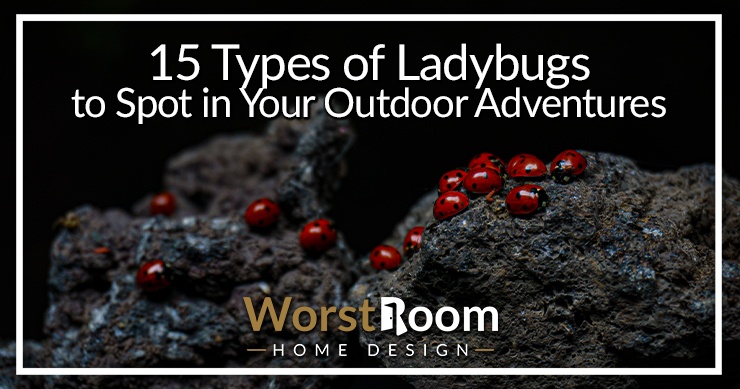
Whenever we think about ladybugs, the first picture that comes to our mind is an insect with red and black spots on the back. But different types of ladybugs can vary in terms of appearance. While many are red, some are yellow, orange, grey, and even pink in color.
There are more than six thousand species of ladybirds in the world. Many of us don't know that they are not only visually attractive, but ladybugs are usually beneficial insects that can reside in our gardens.
Ladybugs are predators of aphids. They hunt spider mites, mealybugs, whiteflies, and other harmful insects as well.
Most ladybugs are useful flying insects. It means they predate on insects that demolish crops. Although most ladybugs are beneficial for crops, there are some destructive ladybug types you can find around you.
15 Types of Ladybugs
Ladybugs are not hard to find in the surrounding areas. There's over 5,000 ladybug species, but you don't need to know them all, just the ones you might encounter. Let's discuss the most common ladybugs that you can find in your garden.
Convergent Ladybug
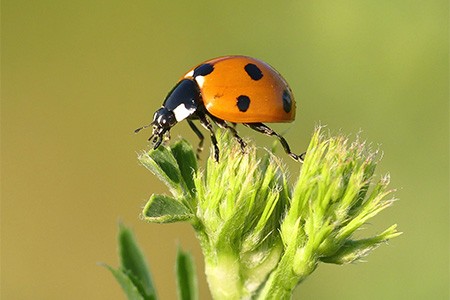
The most commonly found ladybug is the convergent ladybug. These native North American species are mostly found in nurseries and green spaces. These bugs are typically medium-sized. It can grow up to 6 mm long.
This ladybug has an oval-shaped body with black markings that might be yellow or orange in hue. It’s a voracious aphid hunter, similar to the other varieties. Other insects, such as whiteflies, are preyed upon by the convergent ladybug. Sometimes we wonder where spider mites come from, but we know where they go if ladybugs are snacking on them.
Two-Spotted Ladybug
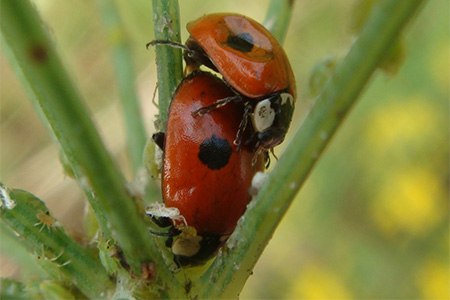
The Two-Spotted Ladybug is a voracious beetle that is found throughout Western Europe and Northern North America.
Just like other ladybug varieties, this one also acts as a biological control for aphid epidemics. Recognizing this ladybug is quite simple. It has two black dots, and its body is a bright red hue.
The black dots make the beetle look like it has two large eyes. Two-spotted ladybugs are commonly used in greenhouses and fields to control crop pests.
Seven-Spot Ladybug (C-7)
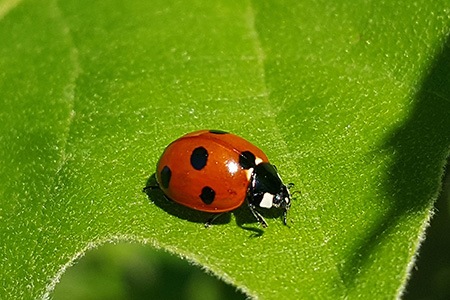
The Seven Spot Ladybug, or C-7, is a brilliant red ladybug among Europe's most regularly spotted species. It is not only popular in Europe but also widespread in the United States.
On the back of this ladybug, there are seven spots. There are six little black spots on the wing coverings (both sides of each wing), and a bigger black mark in the center, immediately at the back of the pronotum.
This species is commonly employed in crop fields and grasslands as an organic control approach against pests and aphids since it is among the best natural aphid predators. The seven-spot ladybug is among the largest types of ladybugs. Here, the adults can grow to approximately 10 mm.
Twenty-Two-Spot Ladybug
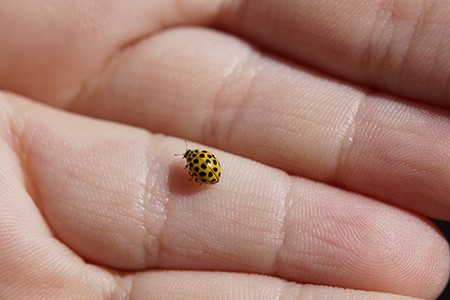
The vivid yellow hue of the ladybug with 22 spots makes it a standout ladybird. This little ladybug species has 22 spots all over its body, and the pronotum has five spots, as its name indicates.
The little beetle is a member of the family Coccinellidae, reaching just 5 mm in length. Its food habits are not like those of other ladybugs, as it doesn’t consume aphids. It consumes the mildew that grows on the leaves of bushes.
Cardinal Ladybug (Vedalia Ladybug)
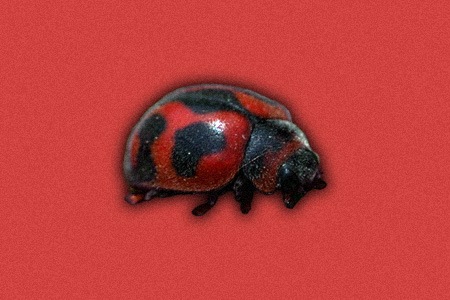
The body of the Cardinal Ladybug is black. And the back of its body has striking red patterns. This is unusual because it contrasts with the more frequent appearance of several other varieties of ladybugs.
Australia is its native country, and in length, it rarely surpasses 4 mm. It’s a beneficial insect that eats tiny mites, aphids, and insects. They're a great way to get rid of fungus gnats, too.
They are employed to treat mite infestations that occur in orchids and among fruit trees throughout California and Australia.
Pink-Spotted Ladybug
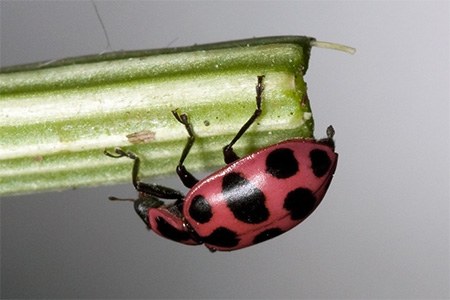
The pink-spotted ladybug is popularly called the pink-spotted ladybug. The color of its body is usually pink, but sometimes it might seem red as well. This ladybird has black patches all over its body, like other variants.
12-spotted lady beetle is another name for this ladybug. The sizes are typically medium-sized, and the forms of ladybirds are frequently elliptical. Both adults and larvae hunt for aphids to feed themselves.
They also consume mites, flies, tiny larvae, insect eggs, etc. Pollen can make up almost 50% of this ladybird's diet, depending on the location. Besides, they control the Colorado potato beetle as well.
Eye-Spotted Ladybug
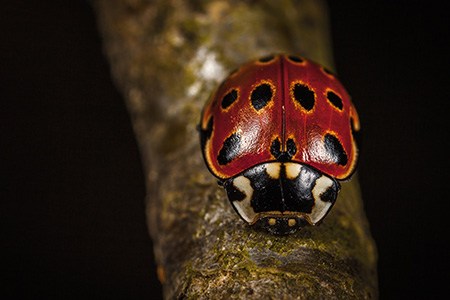
When you see these different types of ladybugs, it's easy to understand how the eye-spotted ladybug got the name. There are a lot of patterns on both wings that resemble small eyes. It stands out from other ladybirds because of this.
The dots are white with a black centre and are usually red in appearance. This ladybug is comparable in size to the 7-spotted ladybird of Northern Europe, measuring 7–10 mm.
Orange-Spotted Ladybug
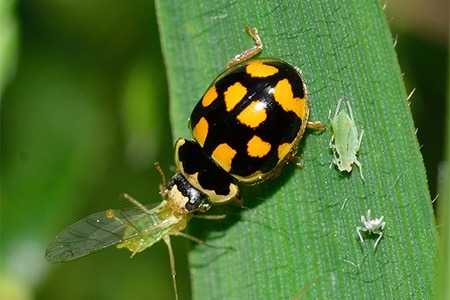
The orange-spotted ladybug is a unique ladybug species with orange spots on the body. These lady beetles are also called ursine spur leg lady beetles. It has an oval body, and the back is dome-shaped.
Each wing case might have several vivid orange or yellow marks on them. These different species of ladybugs are a tiny variety, only 3 to 4 mm long. That's why this ladybug species is not easy to notice with bare eyes.
20-Spotted Ladybug
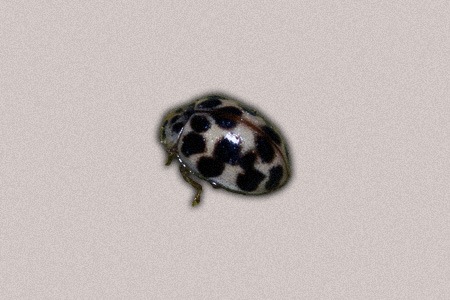
The 20-spotted ladybird has a distinctive appearance. Among the different ladybugs, this one has a color combination that is quite unique. The back of these ladybug types are usually cream colored with brown patters.
These ladybug varieties have 20 black spots or brown spots on its body. Besides, this one is difficult to detect since it hardly ever exceeds 3 mm in length.
3-Banded Ladybug
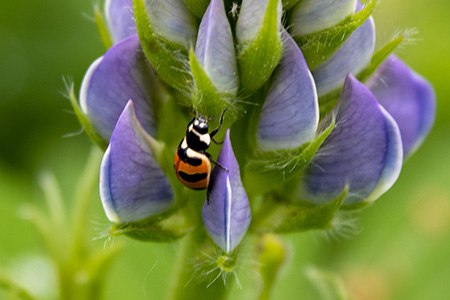
The 3-banded ladybug is among the smallest ladybirds. It is around three to four mm long, which makes it unnoticeable sometimes. This ladybug is a North American variety.
Both the male and female ladybug have some differences in appearance. Each of them has three bands, but the male one has one pale head, and the female one has two pale spots.
Hadda Beetle (Twenty-Eight-Spotted Potato Ladybug)
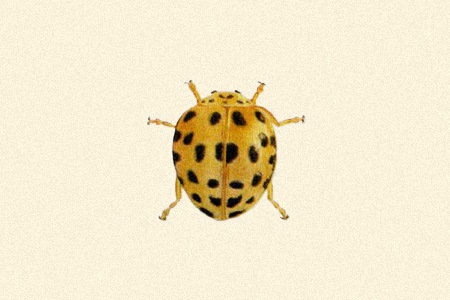
Another name for this ladybug is the Spotted Potato Ladybug. This is a yellow-orange beetle. The name came from the fact that it eats potato plants, frequently causing damage to the harvest.
There are 28 black dots on the body and 14 on the wing covers (each of them) of these types of ladybugs. And its oval body is larger at the headend. India is the native country of Hadda beetles and can be found in various nations in the Southern Hemisphere.
California Ladybug
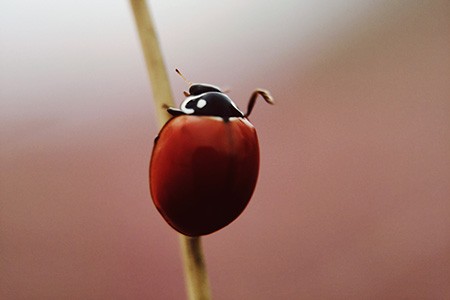
The California Ladybug is remarkable. It lacks black markings while having a red-domed body. A black stripe runs down the centre of its back instead.
Each side of its black head may have a white patch. This lady beetle from California is around 5 mm long, also making it a smaller species of ladybug.
Fifteen-Spotted Ladybug
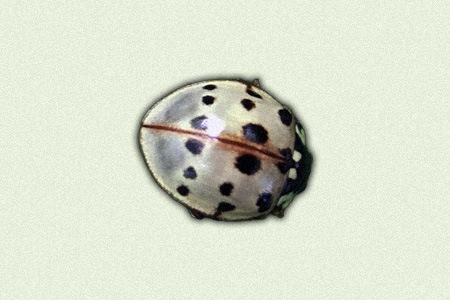
The Fifteen-Spotted Ladybug can be found in two colors and is among the most unique varieties of ladybugs. Its body is usually white in color. Some have a dark purple hue as well.
Every wing covering features black lines on its oval-shaped body. These are among the largest ladybug species, measuring between 7 to 9 mm.
Asian Ladybird
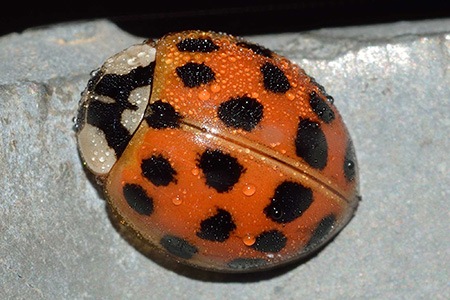
Another name for the Asian ladybird is the multicolored Asian lady beetle, which has a variety of colors ranging from yellow, orange, red, and even black.
The top of the head of these ladybug types have a white segment that distinguishes these little insects. This is frequently marked with black marks in the form of a capital M.
As it frequently invades homes around the Halloween season for winter hibernation, it is also known as the Harlequin ladybird or the Halloween ladybug.
These ladybirds are threatening and predating local ladybugs in areas of Europe, notably the United Kingdom.
Thirteen Spotted Ladybird
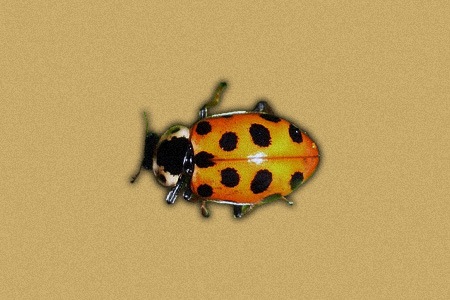
The thirteen spotted ladybirds change their appearance as they grow old. The adults' bodies are dome-shaped, while the larvae's shells are flatter and have little spines.
This dome-shaped body of these different kinds of ladybugs sometimes seems oval in adulthood. It has small legs and antennas. The wings are red or orange and have thirteen black or dark-colored dots on them.
Types of Ladybugs You May See in Your Garden
The different ladybugs are classified depending on colors, sizes, spot counts, usefulness, and habitat. Most if not all types of ladybugs are extremely helpful. In some countries, they are a sign of a good harvest. They are so much better than chemical pesticides that farmers buy ladybugs for their farms in some countries.
And how can we forget about its beauty? In this article, we hope that we were able to provide you with all the answers you needed about the different types of ladybugs.
You'll Also Enjoy:
- 15 Types of Grasshoppers to Look for Out in the Wild
- 15 Types of Termites to Identify & Fight to Preserve Your Wood
- 15 Types of Gnats We All Wish Would Buzz Off [Identification Guide]
- 19 Types of Crickets: Easy Identification Guide with Pictures
- 12 Types of Dragonflies: The Different Species To Know



